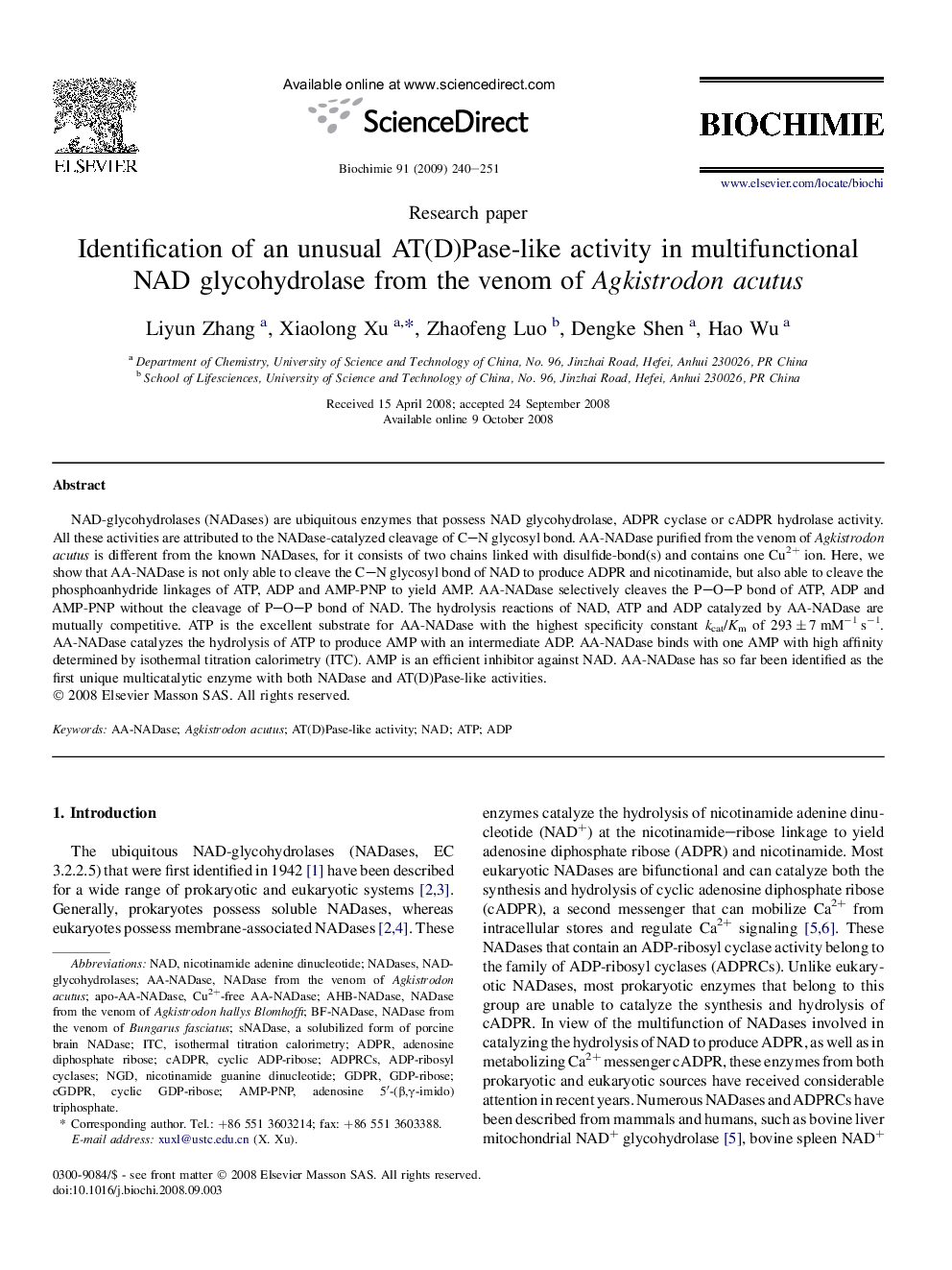| Article ID | Journal | Published Year | Pages | File Type |
|---|---|---|---|---|
| 1952735 | Biochimie | 2009 | 12 Pages |
NAD-glycohydrolases (NADases) are ubiquitous enzymes that possess NAD glycohydrolase, ADPR cyclase or cADPR hydrolase activity. All these activities are attributed to the NADase-catalyzed cleavage of C–N glycosyl bond. AA-NADase purified from the venom of Agkistrodon acutus is different from the known NADases, for it consists of two chains linked with disulfide-bond(s) and contains one Cu2+ ion. Here, we show that AA-NADase is not only able to cleave the C–N glycosyl bond of NAD to produce ADPR and nicotinamide, but also able to cleave the phosphoanhydride linkages of ATP, ADP and AMP-PNP to yield AMP. AA-NADase selectively cleaves the P–O–P bond of ATP, ADP and AMP-PNP without the cleavage of P–O–P bond of NAD. The hydrolysis reactions of NAD, ATP and ADP catalyzed by AA-NADase are mutually competitive. ATP is the excellent substrate for AA-NADase with the highest specificity constant kcat/Km of 293 ± 7 mM−1 s−1. AA-NADase catalyzes the hydrolysis of ATP to produce AMP with an intermediate ADP. AA-NADase binds with one AMP with high affinity determined by isothermal titration calorimetry (ITC). AMP is an efficient inhibitor against NAD. AA-NADase has so far been identified as the first unique multicatalytic enzyme with both NADase and AT(D)Pase-like activities.
